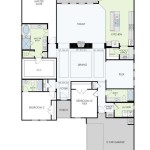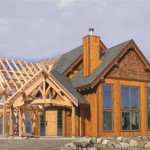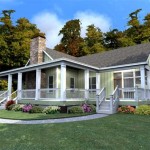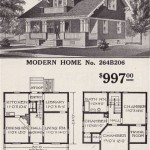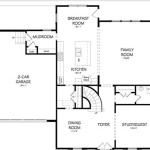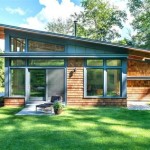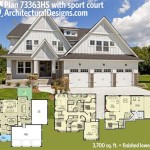Tiny Home Floor Plan Ideas
The allure of tiny home living lies in its simplicity and efficiency. However, creating a functional and comfortable space within a limited footprint requires careful planning. A well-designed floor plan is essential for maximizing space and ensuring that all necessary functions are accommodated. This article will explore several popular tiny home floor plan ideas, providing insights into maximizing space utilization and designing a home that meets individual needs.
Open Concept Living
One of the most common and effective strategies for designing tiny homes is the open concept layout. This approach eliminates traditional walls and partitions, creating a spacious and airy feeling. By merging the living, dining, and kitchen areas, the open concept maximizes natural light, visual flow, and a sense of openness. This design emphasizes functionality and flexibility, allowing for multiple uses within a single space. For example, a sofa can double as a bed in a loft space, and a dining table can be used for both meals and work. The open concept design also encourages a minimalist approach, emphasizing the importance of multipurpose furniture and clever storage solutions.
Strategic Use of Lofts
Lofts are a game-changer in tiny home design. Taking advantage of the vertical space, lofts offer an efficient way to create a sleeping area, an office space, or even additional storage. The key to successful loft design lies in maximizing the available headroom and ensuring accessibility. This may involve using a staircase with a gentle incline or a ladder for reaching the loft. Loft design often requires consideration of the height of the ceiling. For example, lofts with low ceilings may be better suited for storage or a small office space, while lofts with higher ceilings can accommodate sleeping areas. Safety should always be a priority, ensuring the loft structure and design are robust and meet building codes.
Smart Storage Solutions
Storage is paramount in tiny homes. Creating an efficient storage system that maximizes every inch of available space is crucial. Tiny home floor plan ideas employ various clever storage solutions, maximizing vertical space, incorporating hidden storage, and utilizing multi-functional furniture. For example, built-in shelves and drawers can be incorporated within walls, under stairs, and even within the loft space. Murphy beds can transform from a bed to a wall-mounted storage unit, and furniture with built-in storage, like ottomans with lift-up lids, can provide concealed compartments for items that might otherwise clutter the living space. The key to effective storage in tiny homes is strategic planning and a minimalist mindset.
Designing for Functionality with Tiny Home Floor Plan Ideas
The design of a tiny home floor plan is not merely about aesthetics but about creating a functional and comfortable living environment. Each space must be carefully considered, ensuring it serves its purpose and is easily accessible. This involves designing spaces that allow for efficient movement, ample natural light, and a sense of organization. For example, the kitchen area should have sufficient counter space and storage for cooking and meal preparation. The bathroom should be designed for comfort and functionality, incorporating a shower, toilet, and sink within a small footprint. Consideration of ergonomics is essential. For instance, the height of countertops and appliances should be tailored to the user's height and reach. The floor plan should also prioritize accessibility and safety, ensuring clear pathways and adequate lighting.
Incorporating Flexibility and Adaptability
Tiny homes are often designed with an eye towards flexibility and adaptability. This is essential for those who want to ensure their home can evolve and adapt to changing needs. Modular furniture, such as folding tables and couches, can be rearranged to create different configurations for living, dining, and working. The open concept floor plan, by its very nature, offers flexibility in how space is used. For example, a living area can be easily converted into a guest room by adding a sleeper sofa or temporary bed. Adaptability also extends to the overall design of the home. For instance, a tiny home can be constructed with a foundation designed for future expansions, allowing for the addition of a porch or even a second floor when needed.

Tiny House Design Floor Plans

Tiny House Floor Plans 32 Home On Wheels Design

27 Adorable Free Tiny House Floor Plans Craft Mart

Tiny House Plan Examples

Tiny House Floor Plans With Lower Level Beds Tinyhousedesign

Family Tiny House Design Floor Plans Layout

Tiny House Plans For Houseplans Blog Com

10 X 20 Tiny Home Designs Floorplans Costs And Inspiration The Life

2 Bedroom Tiny House Plans Blog Eplans Com

Tiny House Plans Small Floor

